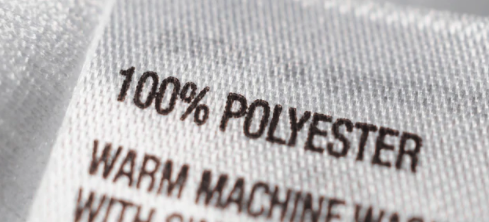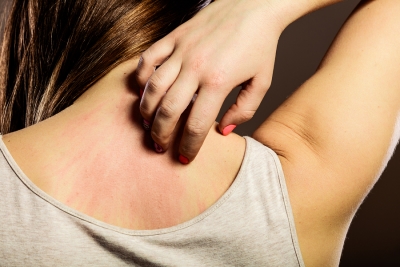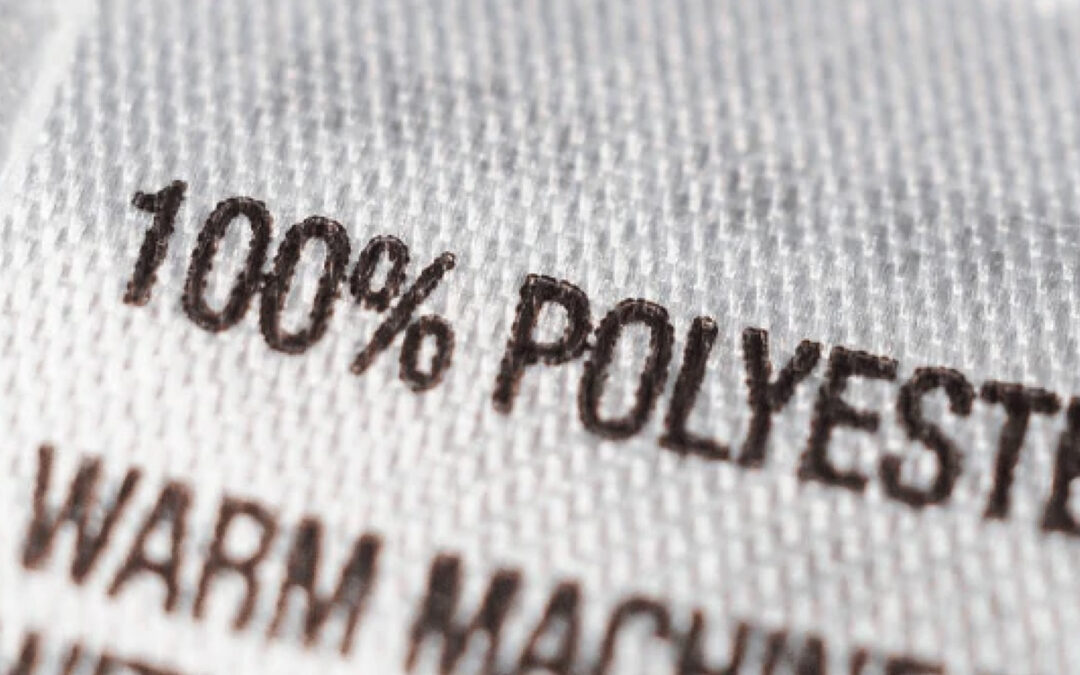
A person with a polyester allergy may experience a skin reaction when they come into direct contact with fabrics containing polyester. Polyester is a widespread synthetic fiber that is common in:
- clothing
- home furnishings such as carpets, bedding, and curtains
- industrial fabrics
A polyester allergy is a type of contact dermatitis. There are two main types of contact dermatitis:
- Irritant contact dermatitis. This is the most common type, occurring when a substance irritates or damages the skin and causes inflammation. This reaction typically occurs within minutes or hours of the person’s skin coming into contact with the substance.
- Allergic contact dermatitis. This occurs when the body’s immune system mistakenly reacts to a harmless substance, causing a skin reaction. This response often occurs several days after exposure to the allergen.
Polyester allergies are more likely to be due to irritant contact dermatitis.
Symptoms
Polyester allergies typically affect the area of skin that the fabric comes into contact with. Symptoms can include:
- skin irritation
- redness
- dryness
- itching
- swelling
- blistering
These symptoms may develop within minutes or hours of coming into contact with polyester, or they may take 1–2 days to appear.

Treatment
Correctly identifying a polyester allergy is challenging. The polyester-based material sometimes contains a range of other potential irritants, such as detergents, dyes, or fragrances.
Before undergoing any form of treatment, it is important to identify the source of the allergy with the help of a doctor.
The most effective way to treat a polyester allergy is to avoid coming into contact with polyester. Replacing household products and items of clothing with polyester-free versions can help reduce the risk of experiencing a reaction.
However, it will not always be easy or possible to avoid all polyester, particularly at work or in other public places. There are a range of over-the-counter (OTC) and prescription medications available to relieve the symptoms of a polyester allergy, including:
- moisturizers
- antihistamines
- topical or oral steroids
A doctor can provide guidance on how to use these medications.
If a person’s symptoms do not respond to treatment, a doctor may recommend light therapy, or phototherapy. This therapy uses a special type of light to slow cell growth and inflammation in the skin. Doctors use it to treat a range of skin conditions, including polyester allergies.
Prevention
A person can prevent reactions to polyester by avoiding direct contact with fabric that contains polyester. This may require finding alternatives to clothing or furnishings made from polyester. Alternative fabrics include:
- cotton
- linen
- wool
- silk
- spandex
Fabrics often contain a mix of different fibers, so it is essential to check the label before buying. For example, many cotton-based materials also contain polyester.
Many carpets also contain polyester, but it may not always be practical or affordable to replace these. However, a person can avoid direct contact with a polyester carpet by:
- wearing appropriate footwear, such as socks, slippers, or shoes
- putting down polyester-free rugs
- avoiding sitting or lying on the carpet
Informing an employer can also help reduce the risk of coming into contact with polyester. A person’s employer may take measures to replace polyester-based products with suitable alternatives. A doctor can provide written confirmation of a polyester allergy.
Contributing factors
There are certain factors that can increase the likelihood of having a polyester allergy, such as:
- having other allergies
- having preexisting skin conditions, such as eczema
- having sensitive skin
- working with the skin submerged in water
- working in hot or humid environments
Takeaway
Polyester is a common synthetic fiber that manufacturers use in a range of fabrics, including clothing and home furnishings. For some people, coming into direct contact with polyester can cause a skin reaction.
The best prevention method for a polyester allergy is to avoid all skin contact with fabrics that contain polyester. This may not always be possible, but OTC and prescriptions medications are available to help manage symptoms.
Contact Us Today
Related Articles
Winter Seasonal Allergies: What They Are and How to Get Them Under Control
As the weather turns colder, you may expect your allergy symptoms to subside. After all, the usual...
Holiday Travel: How to Stay Safe with Food Allergies & Asthma
The holiday season is a time for family, fun, and celebration. However, if you or a loved one have food...
Is it a Sinus Infection, a Cold, or Allergies? How to Tell the Difference
When you start feeling under the weather with a stuffy nose, sneezing, or a sore throat, it can be hard to...








